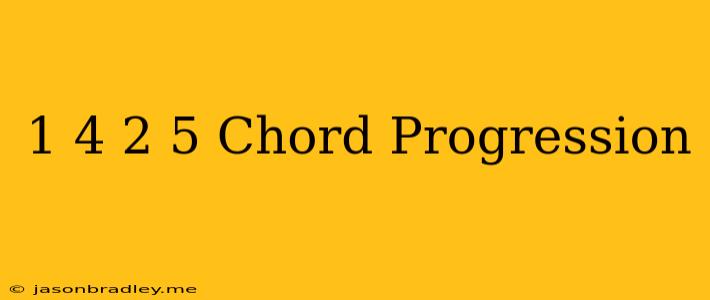The Classic and Versatile I-IV-ii-V Chord Progression
The I-IV-ii-V chord progression, also known as the "four-chord progression", is a fundamental and incredibly versatile sequence in music, particularly in popular genres like pop, rock, and blues. It's simple, memorable, and evokes a sense of resolution and satisfaction. Let's delve into the reasons behind its popularity and how you can utilize this powerful progression in your own music.
Understanding the Chords
The four chords are named after their Roman numeral designations in music theory, corresponding to their relationship within a key.
- I (One) Chord: The tonic chord, representing the root of the key. For example, in the key of C major, the I chord is C major.
- IV (Four) Chord: The subdominant chord, creating a feeling of movement towards the tonic. In C major, the IV chord is F major.
- ii (Two) Chord: The minor chord built on the second degree of the scale. In C major, the ii chord is Dm (D minor).
- V (Five) Chord: The dominant chord, providing a strong sense of resolution and anticipation of the tonic. In C major, the V chord is G major.
Why is it so popular?
- Musical Appeal: The progression creates a satisfying and predictable harmonic structure that resonates with listeners. The movement from the IV to the V chord, especially, is known as the "dominant-tonic resolution" and brings a sense of completion.
- Versatility: The I-IV-ii-V progression can be adapted to various musical styles, tempos, and moods. By choosing different chord qualities (major, minor, seventh chords), you can create a vast range of musical textures and emotions.
- Easy to Remember: The simplicity of the progression makes it easy to learn and play, even for beginners.
Putting it to Use
Here are some ways to explore and utilize the I-IV-ii-V progression:
- Experiment with Key Changes: Move seamlessly between different keys, using the same chord progression but shifting the root notes.
- Add Chord Extensions: Introduce seventh chords, major and minor, for a richer harmonic experience.
- Incorporate Rhythm and Groove: Play with different rhythms and strumming patterns to create dynamic and interesting variations.
- Explore Different Genres: Try the progression in pop, rock, blues, country, and even classical music.
Examples
- "Twist and Shout" by The Beatles: A classic example of a simple I-IV-ii-V progression used in a rock anthem.
- "House of the Rising Sun" by The Animals: A powerful blues song that showcases the progression's ability to convey emotion.
- "Blowin' in the Wind" by Bob Dylan: A folk song illustrating the progression's versatility in creating a melancholic atmosphere.
The I-IV-ii-V progression is a foundational element in music. Understanding its structure, versatility, and common uses can elevate your musical creativity and provide a solid framework for creating compelling and memorable melodies. Get experimenting and have fun!
